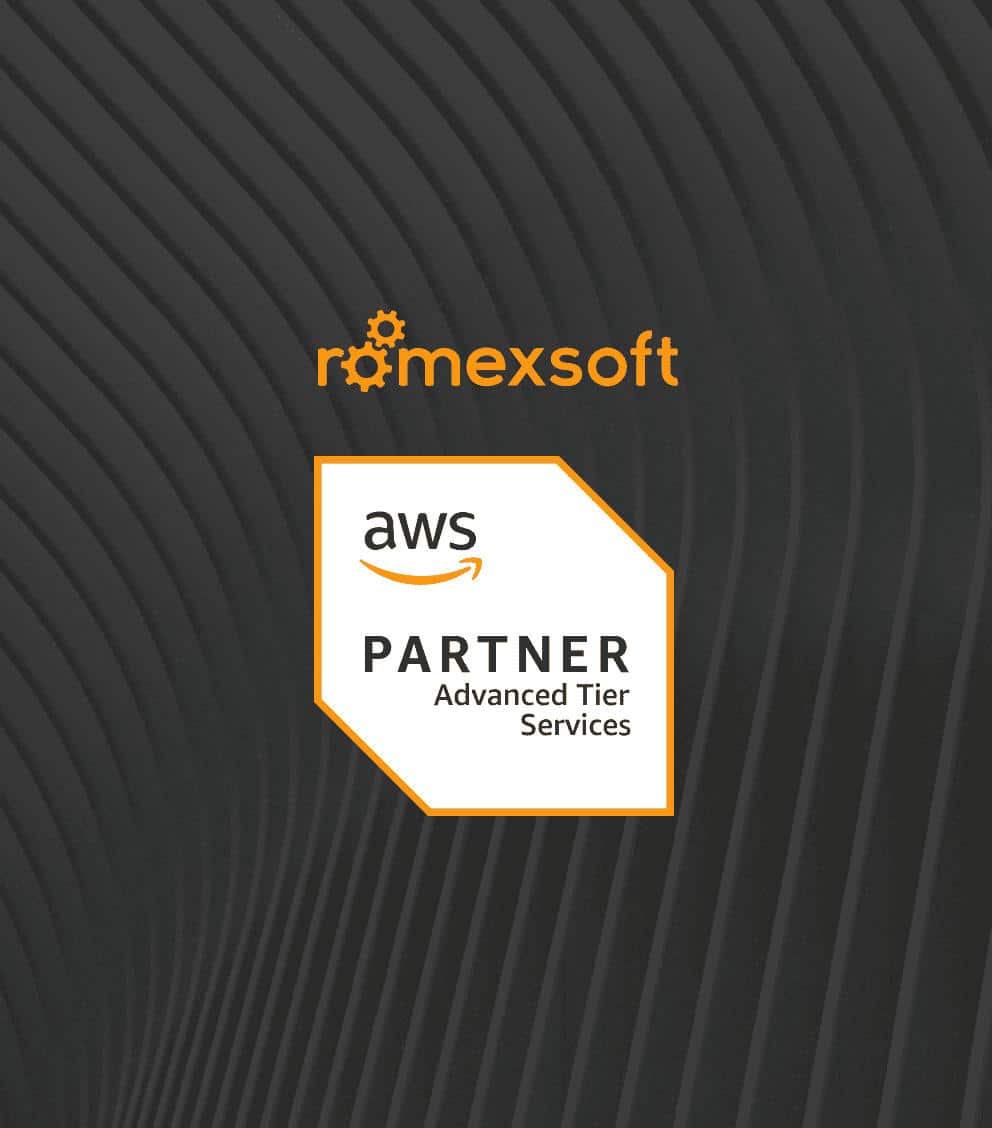Ecommerce Infrastructure Automation and Modernization on AWS
Discover how our team used IaC and CI/CD to modernize an ecommerce platform on AWS.

Our Customer
Online Marketplace for Precious Metals
LPM stands as one of Asia’s largest and most trusted precious metal retailers. The company carries a wide range of products including but not limited to popular newly released silver coins, gold bullion, certified coins and the newest and most innovative collectible numismatic issues. The company owns and operates the online marketplace for metal retailers.
The Challenges
Manual Updates, Testing, and Business Continuity
As a top regional platform for trading and retailing precious metals, the client encountered major ecommerce infrastructure automation challenges that impacted efficiency, resilience, and business continuity.
Manual processing of code and infrastructure updates
The client operates a marketplace solution built with Adobe Commerce (Magento) hosted on Amazon EC2 virtual servers. The system further incorporates various Amazon Web Services, including the Relational Database Service, ElastiCache, and MQ, all manually configured. Consequently, both code and infrastructure updates are also carried out manually. This approach is time-consuming, introduces risks of errors, and hinders the client’s agility in responding to evolving business needs.
Unproductive and insecure development process
The client’s platform faced a challenge as it was devoid of separate, isolated environments for testing and debugging, which slowed down the entire development and testing process. Moreover, there was a need for access segregation in each environment, limiting users from making changes in lower-level environments while preventing actions in the production environment.
Inefficient and problematic troubleshooting
The monitoring system on the platform, responsible for collecting logs from servers, required improvements and quality updates due to architectural changes in the entire application. Due to the evident inconvenience of the current monitoring system, the client faced difficulties in promptly identifying and resolving issues on the platform, posing a risk to overall system reliability and performance.
Risk of business continuity vulnerability
The existing backup system and version rollback capability had some disadvantages that jeopardized the overall data integrity of the platform. In the case of unexpected issues or data loss, the inability to swiftly restore or roll back to a stable state raises alarms about potential system disruptions, leading to significant concerns about business continuity.
The Solution
Automated E-Commerce Infrastructure with CI/CD and Containerization
Infrastructure Automation and Containerization with IaC
Our initial step involved a thorough examination of the existing infrastructure, pinpointing key improvement areas based on the previously outlined challenges.
The Adobe Commerce (Magento 2) platform operated on the Amazon EC2, serving as the application’s foundational engine. So to tackle the identified challenges, the primary step of the devised plan is containerization of applications services and deploying them on Amazon Elastic Container Service (ECS), following AWS best practices. Upon this implementation, the platform could easily adapt to changing workloads, ensuring optimal resource utilization and accommodating evolving business needs.
By employing the Infrastructure as Code (IaC) approach, we managed to automate infrastructure using Terraform and Terragrunt. It ensured the automation of setting up, provisioning, deploying, and managing required environments. Apart from reducing manual errors, this automation expedited the overall development and testing lifecycle, thus enhancing operational efficiency.
Building upon the golden Docker image, we established a pipeline for creating Docker images with predefined configurations. Some configurations became easily changeable and updatable during the code build. This particular solution standardized deployment pipelines, ensuring consistency in deploying various services. Maintaining this consistency effectively minimized deployment-related issues.
Containerization also extended to the client application. In order to ensure the confidentiality of sensitive information, we leveraged AWS System Manager Parameter Store, securely storing all necessary build variables in an encrypted form.
CI/CD Pipelines for Faster and Safer Deployments
We configured pipelines to facilitate the deployment of essential applications, conduct infrastructure upgrades, and manage the deployment/removal of new environments. The Jenkins server was deployed to establish conceived CI/CD processes.
A dedicated pipeline was created to build a golden Docker image, serving as the foundation for future builds of services such as Varnish, Nginx, PHP-FPM, Fluent-bit, and the main Adobe Commerce (Magento 2) platform. This standardized procedure ensures consistency and efficiency in the deployment and maintenance of various components.
A Jenkin-based pipeline scenario was implemented to automate the creation and deletion of new environments for development and testing. It provides a streamlined and standardized approach to managing development and testing environments. This enhances operational efficiency as well as ensures consistency, scalability, and resource optimization across the software development lifecycle. The access control system additionally implemented on the Jenkins server, ensures that actions could only be executed in the relevant environments.
AWS Account Structure and Environment Separation
We established an AWS Organization and built a hierarchy of distinct AWS accounts dedicated to separate environments, whereby each has its own purpose and infrastructure:
- Management account responsible for billing and creating other accounts.
- Service account for monitoring, CI/CD processes, users, and access to other accounts of the organization.
- Production account to deploy the primary working product.
- Staging and Dev accounts configured as exact replicas of production to provide environments closest to production for testing.
To enhance the security of the environments, we have established all environments within private subnets, ensuring access to them is exclusively through a bastion server.
Centralized Monitoring and Issue Resolution
We deployed a monitoring system based on Grafana and OpenSearch Service, incorporating such capabilities as collecting logs from all the necessary services, sending alerts, and analyzing logs and metrics data. Amazon Cloudwatch was also set up to monitor the load and increase or decrease the resources used depending on the load.
The monitoring system ensures continuous logging, allowing for efficient troubleshooting and rapid issue identification. With real-time alert notifications, potential problems can be dynamically tackled, thereby contributing to improved system stability. This proactive approach also enhances preventing and addressing performance issues which lead to potential disruptions.
Application Performance Optimization
We leveraged Amazon Elastic File System (EFS) for storing static files and implementing Varnish Cache as a caching HTTP reverse proxy, contributing significantly to accelerated application performance speed. These measures, coupled with the configuration of Amazon CloudFront, not only facilitated efficient storage and retrieval of static content but also resulted in a substantial acceleration of the platform when it was loaded by the users. These optimizations in general established faster performance for the entire application.
Resilient Backup and Rollback Strategy
As part of our infrastructure automation, we proactively established a robust data backup system for essential application services. The Jenkins server’s pipeline, designed for swift error recovery and version rollback, played a pivotal role in maintaining system stability. It facilitates a swift rollback to the previous version in case of errors. Leveraging Amazon EBS snapshots and Amazon RDS Backup and Restore contributed to the system’s ability to recover from errors and added a layer of resilience to the platform’s data integrity, as well.
AWS Architecture Diagram for E-Commerce Infrastructure Automation
The Results
Improved Workflow with Automated Solutions
While the solutions implemented addressed the challenges outlined in the initial assessment, they also collectively led to a more performant, secure, scalable, and operationally efficient application for the client. The enhancements spanned different aspects of the application’s infrastructure, delivering a measurable positive impact not only on platform performance, reliability, and functionality but also on code integrity, operational efficiency, and the overall user experience.
Efficient and secure development process
The shift to Infrastructure as Code (IaC), combined with the creation of isolated environments minimized manual efforts, meanwhile offering the flexibility to create and test new features without disrupting production.
Cost optimization
All these infrastructure automation and development process improvements bring cost-efficiency for the client by expediting the creation of environments, allowing the freeing up of unused, costly resources.
Stable system performance
Implementation of a monitoring system has notably improved performance stability. The system’s ability to quickly detect and troubleshoot issues has been enhanced as well, positively impacting overall system reliability.
Reinforced business continuity
The boosted infrastructure automation provides the client with opportunities to expand and automate new processes seamlessly, fostering scalability and adaptability. A refined data backup system, coupled with the ability to swiftly roll back to stable states, has mitigated risks associated with data loss, addressing concerns about business continuity.
Why Romexsoft
Trusted E-Commerce Automation Partner
Romexsoft has the expertise in DevOps consulting and specializes in automating e-commerce infrastructure. We make sure that automation provides both operational stability and economic value by coordinating technical execution with business objectives.
Companies that collaborate with us to automate their e-commerce infrastructure benefit from:
- Quicker time to market thanks to automated deployments and continuous delivery pipelines
- Decreased operational overhead as automation replaces manual labor in routine infrastructure management
- Increased adaptability to scale environments in response to new business needs or seasonal peaks
- Enhanced compliance posture through automated workflows that incorporate AWS security and governance procedures.
FAQ on AWS Infrastructure Automation
A combination of business and operational KPIs can be used to evaluate the effectiveness of infrastructure automation. Key metrics include:
- Deployment frequency measures how often new code or infrastructure changes are successfully released.
- Change lead time tracks the time it takes for a code commit to move into production.
- Mean Time to Recovery (MTTR) calculates the average time required to restore service after an incident.
- Change failure rate shows the percentage of deployments or updates that cause issues requiring fixes or rollbacks.
- System uptime / availability expressed as a percentage, it reflects the overall reliability of the platform.
- Resource utilization efficiency indicates how effectively cloud resources (CPU, memory, storage) are used after automation.
Even after automation, infrastructure requires continuous care to remain secure, efficient, and aligned with business needs. Typical maintenance and evolution tasks include:
- Regularly updating IaC modules, container images, and CI/CD pipelines to remain compatible with new AWS or third-party releases.
- Applying security patches, rotating credentials, and ensuring compliance with standards such as PCI DSS or GDPR.
- Monitoring workloads, adjusting resource allocations, and refining scaling rules to optimize both cost and performance.
- Improving automation scripts, reorganizing pipelines, or migrating services to newer AWS offerings as part of ongoing modernization.
- Expanding observability by fine-tuning metrics, logs, and alerts to maintain effective monitoring as the platform evolves.
- Testing backup and rollback procedures on a recurring basis to validate disaster recovery readiness and resilience.
Infrastructure automation uses APIs and standardized connectors to link e-commerce platforms with payment gateways, CRM, and ERP systems, while automated configuration management ensures consistent integration settings across environments and reduces manual errors. CI/CD pipelines manage updates to integration logic so that new features or third-party changes can be deployed quickly without downtime. At the same time, monitoring and logging capture data flows between systems to detect errors, track performance, and maintain reliability. Finally, security and compliance controls such as IAM roles and encryption safeguard sensitive customer and payment data throughout these integrations.
Infrastructure automation is not limited to the cloud and can be applied to hybrid and on-premises environments as well. IaC tools such as Terraform, Ansible, or Chef support provisioning and configuration across different infrastructure types, enabling consistent management. Hybrid automation strategies allow workloads to be distributed between on-premises data centers and cloud resources, ensuring flexibility and business continuity. On-premises automation often focuses on repetitive tasks like server provisioning, patching, and monitoring, while cloud automation emphasizes elasticity and scaling. A unified automation framework provides consistency in deployment, security, and compliance policies across all environments, reducing complexity and operational risk.


